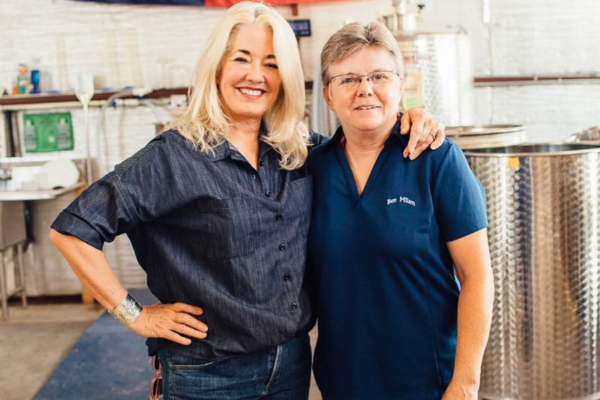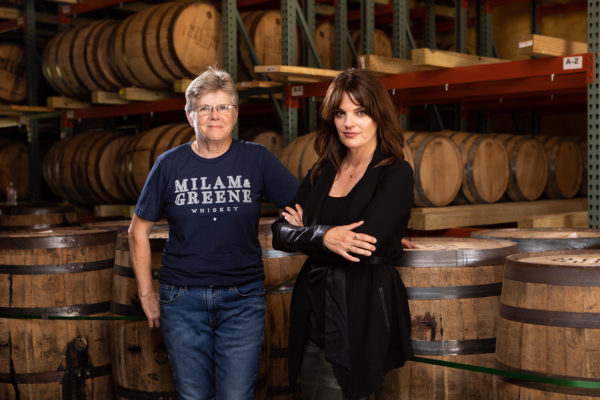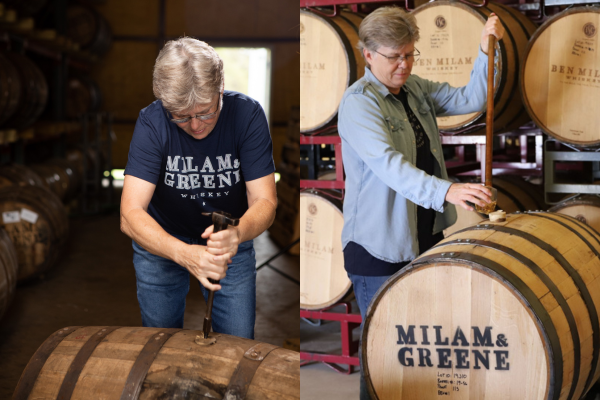
10/11/2023 Unveiling the Journey of Master Distiller Marlene Holmes
Explore the three-decade journey of Master Distiller Marlene Holmes, from a tranquil Kentucky farm to the iconic Jim Beam distillery. Join us in uncovering her passion, insights on sustainability, and the evolving trends shaping the future of the beverage industry. Discover the life and legacy of a distiller dedicated to leaving an indelible mark on the world of whiskey.
Tell us a little about your background and journey into distilling.
My distilling journey started in the summer of 1990. I owned a small 30-acre farm in central Kentucky and during this time period, aquaculture was become a thing to take the place of farmers raising tobacco. Now, I wasn't a tobacco farmer, but I loved to fish and loved a good fried catfish meal. I went to my local county extension agent to gather information. He told me during our chat that a guy at the local Boston Jim Beam distillery was experimenting with using dried grain or distillers' grain as fish food. Distiller grain was already being used as livestock food, so why not catfish food? Now the guy heading up the experiment at the Jim Beam distillery was Booker Noe. A few days later I met with Booker. It was the first time to met him. We ate lunch and chatted for about an hour, mainly talking about fishing as Booker loved to fish as well. Before we parted ways that day he asked if I would help out with his experiment. He needed someone to come in daily and feed the catfish, I agreed to do so. I was the fish feeder for that summer. Booker had purchased 1,000 catfish fingerings and had the maintenance crew at the distillery build a cage to hold them. The cage was dropped in one of the chill water spray ponds right behind the distillery building.
I had never been inside a bourbon distillery, so I was very curious. First of all, there were very few people around. On some trips down I would only see the security guard at the front gate. It amazed me that so few people could run an operation of that size. 50,000 gal. beer well, 10,000 gal. whiskey tank, big grain silos, rooms filled with fermenting tanks... it was pretty cool. On occasion, there would be one of the employees out back behind the maintenance shop with the grill cooking ribs, burgers, steak... I'm thinking about where you can work and pull a grill out to cook like this.
Over time I met several of the employees. It seems like a very close-knit group in a pretty casual laid-back environment. As the summer drew to an end, one of the guys mentioned that they were hiring. The whiskey business had been in decline for several years but was starting to pick up again. Booker was to play a big part in this resurgence with the creation of The Small Batch Bourbons; Bookers, Bakers, Knob Creek and Basil Hayden.
I applied for the opening they were hiring for. My first day on the job at the Booker Noe Distillery was November 11, 1990.
I spent 27 years in various positions but mainly in the distillery operating the column stills.
It quickly became a love, not a job!
I left Beam in April 2018 after meeting Marsha Milam, founder of Milam and Greene Whiskey. Marsha was in need of a distiller and I had often wondered my last few years at Beam how neat it would be to help build a brand with a craft distillery. Marsha is a serious whiskey lover who wanted to create a premium whiskey brand. She told me " We don't settle for ok, we want to be the best"! I was hooked!

Image: From Left to Right - Marsha Milam, founder of Milam and Greene Whiskey, and Marlene Holmes.
I never imagined pulling up roots and leaving Kentucky but after meeting Marsha and the folks with M&G, I knew it was something I needed to do and wanted to do. I sold my farm, packed my bags loaded up the truck, and headed to Blanco. It has been a truly amazing opportunity. Heather Greene came on board shortly after I did. Heather is an amazing blender. Her natural instinct and ability talent on the business side of whiskey is off the charts. On the human side of the business, Heather cares deeply about the folks on our team, that's not often part of the equation from the CEO in most work environments. She has been a mentor to me for the past 5 years. I work with some of the most talented, passionate whiskey folks in the business. I'm the luckiest gal in the whiskey world.

Image: From Left to Right - Marlene Holmes and Heather Greene
Your current role and what does your day look like?
Master Distiller, I do a lot of PR and marketing events spreading the gospel of M&G as I call it. I love bragging about our distillery team, I call them the boots on the ground. I taste the mash, and beer as it goes through the fermentation process, new make coming off the stills. Share bits of advice and wisdom with the younger folks on the crew. Taste barrel samples throughout the aging process. Have lunch with the crew. Chat with folks in the tasting room.
What inspired you to become a distiller?
I think being curious about the equipment at first and learning the process. What it takes to operate and maintain the equipment. As time went on the history behind whiskey, I loved reading about and learned more about it. Bourbon is part of the landscape in Kentucky. You grow up around these massive rick houses dotting the landscape. It's part of we are, part of our history. Families came through the Cumberland hauling their pot stills.
I think a lot of it was good fortune honestly, being in the right place at the right time.
It's pretty awesome to walk through the parking lot at my local HEB grocery with my M&G t-shirt on and have someone stop their car, lower the window, and say "I love your whiskey"! That's the ultimate! There's a lot of pride in what I do.
What are some of the most important skills for a distiller?
Attention to detail. It's not rocket science, but if you miss a step in building a rocket, you blow it up. If you miss a step during cooking a mash or during fermentation or distilling you won't have the best product. It's about time and temperature, doing the right thing at the right temp. Having a good palate for tasting, being diligent and consistent.

Image: Marlene Holmes working with a cask.
How do you think a distiller can help in driving marketing and sales personally?
By making the best product you can. Following the proper procedures. Showing pride in what you do and how you do it. Being honest about what you do and how you do it.
Define a good distiller.
Following the proper procedures, great palate, taking pride in what you do and how you do it, and having fun!!
What is the hardest part of a distiller's job?
The physical side deals with the elements.
What's your elevator pitch to a bartender when pitching your brand?
Our whiskey is made by one of the most experienced craft distillery teams in the country. We taste every step of the way from grains coming in to barrels being dumped for bottling. To us, it's all about what goes in the bottle.

Image: Master distiller Marlene Holmes with over 27 years of bourbon distilling under her belt, checking the distilled whiskey.
What are the current challenges the spirits industry is facing according to you?
Having experienced employees, new distilleries continue to pop up. Automation has certainly helped here but it takes a few years for an individual to reach that comfort zone
What is your idea of a good life?
Being good to Mother Earth and treating people the way I'd want to be treated. I love to travel, so I enjoy meeting folks from different backgrounds and experiencing different cultural foods.
Which is your go-to drink and what is the perfect setting you enjoy it in?
A double shot of Unabridged Neat, on my back porch
Your favorite 2-3 distilling or spirits books?
Whiskey Distilled, A Populist Guide to the Water of Life; Last Call; Whiskey Women; Chasing the White Dog.
How do you take care of production waste?
All of our spent stillage is given to local ranchers for livestock feeding
What steps do you take to become more sustainable?
we have a closed-loop chill system in place. we recycle all of our cardboard and the majority of our glass. we reuse old barrel bungs to chalk barrels within the ricks. We break down our port barrels to use in finishing out a new product we just introduced this year. Used barrels are sold to make furniture, brewers to finish beer out, wineries, landscaping proposes.
[[relatedPurchasesItems-31]]
What trends do you anticipate in the beverage industry in the coming months? Where do you see the domestic craft distilling scene going? What's next for the industry?
I think the craft movement has pushed the big players to look/think outside the box, much like the small-batch products did in the 90's. I believe master blenders, like Heather Greene, have made blending cool and unique.
Note: Header and Index Image Source - Marlene Holmes and Milam and Greene Whiskey



